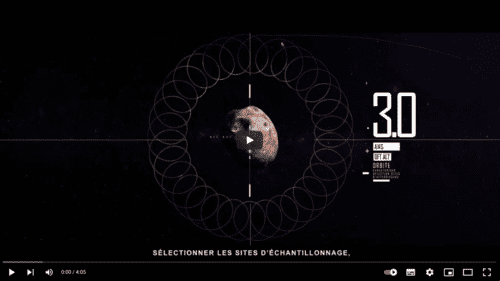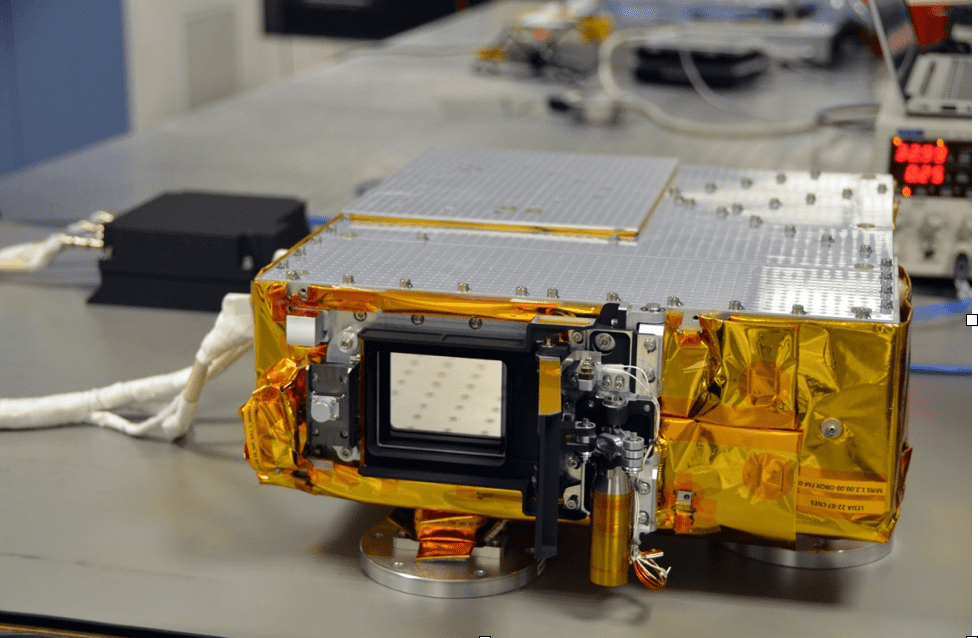The MIRS instrument was built under the project management of LESIA4, a laboratory of Observatoire de Paris - PSL and CNRS, in collaboration with CNES, the contracting authority, and four other French laboratories : LAB5, LATMOS6, OMP7 and IRAP8.
Among a dozen other scientific instruments, MIRS will be integrated into the MMX mission platform in the coming weeks. Scheduled for launch to the Martian system in October 2026, this space mission will be the first to return samples from the Phobos satellite, completing the first round trip to the Red Planet system.
The mission’s main objective is to decipher the origin of the Martian moons, which will provide important information on the formation of planets in the Solar System and the conditions for the appearance of water on terrestrial-type planets.
The mission will make a round trip in five years, with a return to Earth of Phobos samples scheduled for July 2031. The probe will arrive in the Mars system in August 2027. It will spend three years in quasi-satellite orbits around Phobos at different altitudes, making detailed observations of Phobos and Deimos and monitoring Mars’ climate.
MIRS, an imaging spectrometer weighing around 10 kg, operates in push-broom mode : it acquires a linear field and scatters the light from each point on this line to record its spectrum. MIRS thus sends spectral images to the ground, in the band between 0.9 and 3.6 microns.
MIRS will enable us to characterize the composition of the Martian system and help select candidate sites for sampling. Thanks to its scanner and satellite pointing, MIRS will be able to map the surface of Phobos in the infrared with a spatial resolution of between 20 m and a few tens of centimetres for landing sites.
MIRS observations will also be used to determine the distribution of water vapor in the Martian atmosphere, with a spatial resolution of 10 km and a temporal resolution of less than 1 hour in selected areas. These observations will be carried out on successive days in different seasons to characterize temporal variations in the Martian atmosphere.
The MIRS instrument, combined with the MMX payload and sample analysis, will be able to clarify the origin of the Martian moons, and may also be able to elucidate the evolutionary process of the Mars environment.
The MIRS scientific team is made up of several Japanese co-investigators and co-investigators from 10 French laboratories : LESIA, IPAG9, IPGP10, IRAP8, LATMOS6, LAM11, LPG-N12, LMD13, LAB5 and OCA14.
About the contributing parties :
Observatoire de Paris - PSL : In charge of fundamental and applied research, higher education and knowledge sharing in disciplines related to the sciences of the Universe and astronomy, Observatoire de Paris - PSL collaborates on an international scale with the main players in these sectors. With a rich history dating back to 1667, it contributes to theoretical studies, instrumental innovation and observation services for large ground-based telescopes, metrology and space missions. The Observatory is part of the Université PSL (Paris Sciences & Lettres).
CNRS : A major player in fundamental research worldwide, the Centre national de la recherche scientifique (CNRS) is the only French organization active in all scientific fields. Its unique position as a multi-specialist enables it to bring together different scientific disciplines to shed light on and understand the challenges of today’s world, in conjunction with public and socio-economic players. Together, the sciences are at the service of sustainable progress that benefits society as a whole.
CNES : CNES is the public establishment responsible for proposing French space policy to the government and implementing it within Europe. Its strategy is based on four ambitions : national sovereignty, science, economic competitiveness and climate. It designs and places satellites into orbit, invents the space systems of tomorrow, and promotes the emergence of new, everyday services. Founded in 1961, CNES is at the origin of major space projects, launchers and satellites, and is the natural partner for industry to support exports and promote innovation. CNES is a major player in technological research, economic development and industrial policy in France. It also forges scientific partnerships and is involved in numerous international cooperative ventures. France, represented by CNES, is one of the main contributors to the European Space Agency (ESA), tasked by its 22 member states with leading Europe’s space policy.
To find out more about the MIRS instrument and the MMX mission :
- On the LESIA website : https://sites.lesia.obspm.fr/mirs-public/
- On the CNRS Images website :
- Photo report "The MIRS instrument before its departure for Japan - 2024" : https://images.cnrs.fr/reportage-photo/rep001218
Vidéo :
- Movie MIRS on LESIA’s YouTube channel.
 © LESIA
© LESIA

1CNRS : Centre National de la Recherche Scientifique
2CNES : Centre National d’Études Spatiales
3JAXA : Japan Aerospace Exploration Agency
4LESIA : Laboratoire d’Etudes Spatiales et d’Instrumentation en Astrophysique, Observatoire de Paris – PSL/ CNRS / Univ. Paris Cité / Sorbonne Univ.
5LAB : Laboratoire d’Astrophysique de Bordeaux, CNRS/Université de Bordeaux
6LATMOS : Laboratoire ATmosphères, Milieux, Observations Spatiales, CNRS/SU/UVSQ
7OMP : Observatoire Midi-Pyrénées, CNRS/IRD/Météo-France/Université de Toulouse III – Paul Sabatier
8IRAP : Institut de Recherche en Astrophysique et Planétologie, CNRS/Université de Toulouse III - Paul Sabatier
9IPAG : Institut de planétologie et d’astrophysique de Grenoble
10IPGP : Institut de physique du globe de Paris
11LAM : Laboratoire d’Astrophysique de Marseille
12LPG-N : Laboratoire de Planétologie et Géosciences de Nantes
13LMD : Laboratoire de Météorologie Dynamique
14OCA : Observatoire de la Côte d’Azur


